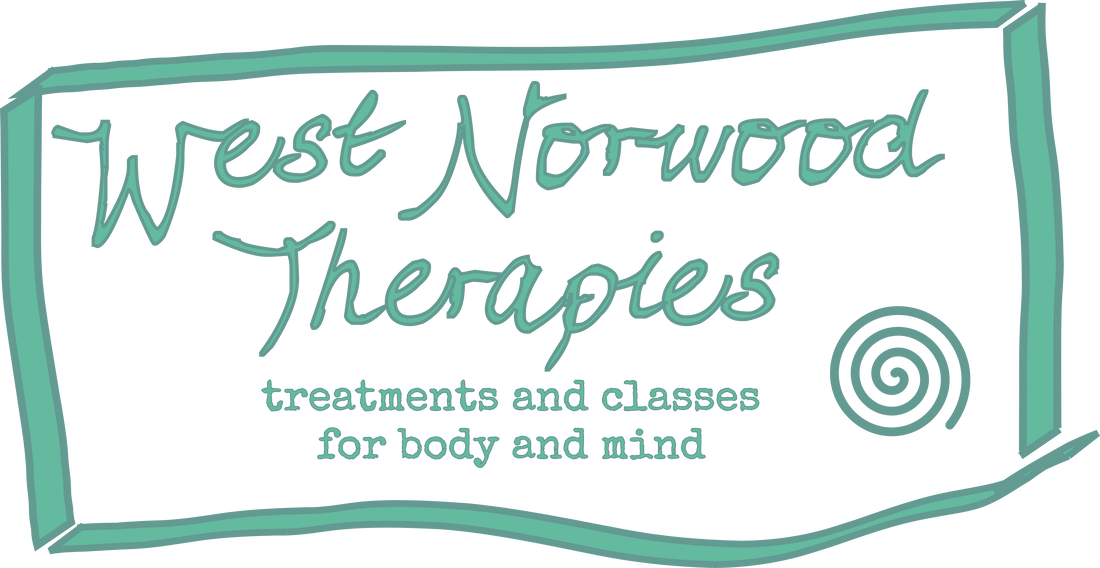|
We have three practitioners at WNT who use acupuncture in their treatments. They each have distinct approaches so to help you decide who would best fit your needs we have asked them some questions about how they work and who they work with. There are 3 acupuncturists at WNT, please can you share a bit about your individual approach or style of acupuncture? 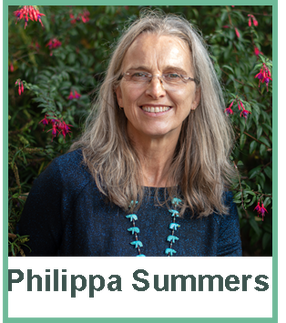 I practise East Asian Medicine (EAM), an umbrella term for many different styles which include my initial training in Traditional Chinese Medicine and 5 element acupuncture with subsequent courses in other styles including Master Tung, Channel Palpation and ear acupuncture, each with their own strengths. Training in TuiNa massage really changed how I work, and it was during that time that I started incorporating more hands on approaches to diagnosis and treatment. Broadly, EAM can be used to focus internally on physiology in a holistic way looking at how the different systems interact and impact on a physical, mental and emotional level. It can also be used to look at the body in a more structural way, focussed on the musculoskeletal skeletal system, but still taking into account the background physiology that nourishes the muscles, bones, tendons, ligaments and joints. My training particularly in fertility and musculoskeletal acupuncture has incorporated more western concepts and diagnostic approaches, but EAM is at the heart of how I work.  My approach is to deepen and utilise the mind-body connection which is done by bringing my decade long Tai chi and meditation practice into the treatment room. Whether it is acupuncture or martial arts, we always aim to create a good flow in the body and mind, as stagnation or being stuck is seen as the root of suffering. So my treatments are often described as a calming flow between Acupuncture, massage and gentle guidance. Thus working on both the Body, Mind and Energy (QI) of the person.  I practice what is known as Dry Needling or Medical Acupuncture (DN/MA). This is an approach used to treat musculoskeletal problems. When I think it may be beneficial to use needling during a massage session I will discuss with the client first and use it in combination with soft tissue work (massage). I will massage the area first to detect where the needles are required and usually leave them in place for 20 minutes or longer if needed. I use DN/MA in approximately 50% of my treatments. I am foremost a massage therapist and I am aware that when people book a massage, that is what they want. I also respect that some clients have a fear of needles although I am happy to say I have introduced DN/MA to a number of clients over the years who have been converted when they feel the benefits of a needle versus my elbow! What kind of clients do you mostly treat?  I treat a wide variety of conditions but since qualifying most of my additional training has focussed on four main areas which in turn determines the type of clients I mostly treat:
So, I see a lot of women for gynae issues like painful periods, PMS, menopausal symptoms, through pregnancy right up to the birth and beyond and a very wide range of fertility issues. This may be support conceiving naturally or while going through ART procedures like IVF and FET, often with background diagnoses like endometriosis or PCOS. I also treat a lot of people with headaches, migraines, musculoskeletal conditions like sciatica, back and knee pain, often chronic recurrent conditions. I tend to refer athletes and sporty people with more acute conditions to Tessa. I have built up good peer support and referral networks in the key areas on which I focus and that is so important in getting help with more challenging cases and signposting clients in the right direction if I can’t help them.  Although I see people with a wide range of health complaints, the most frequent conditions that I treat (and have success with) are anxiety, stress, nerve related pain, sinusitis and digestive issues. I am also happy to say that I see a fairly equal amount of man and women (and everyone in-between). I am really happy to see that men reach out and attend to their mental health needs. 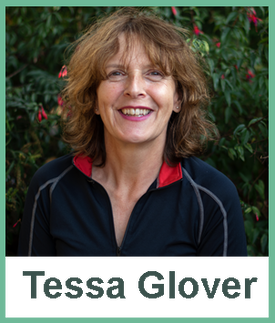 I use DN/MA on all types of clients. From those with migraines or neck/shoulder/back pain to muscle tears. From young semi-professional footballers with injuries to more mature clients to assist with pain relief and rehabilitation from many conditions including Osteoarthrititis and hip/knee replacements. Again I only treat with needles if the client is happy to. What do you enjoy about using acupuncture to work with clients?  I love how very different we all are and feeling a connection with people. Everyone brings their own personalities, strengths and struggles, and it feels vitally important to get a sense of each person and what treatment means to them in order to treat effectively. That spark of connection is so important whatever people are coming for. There is invariably an emotional element to some degree, sometimes a key focus, sometimes more in the background. Acupuncture with its holistic approach and focus on mind, body and spirit offers a versatile framework. It is so good at helping to achieve a sense of peace in our often hectic city lives, where that reset into more 'rest and digest' is a key element for healing. Whether people come with pain, with mental health struggles, wanting to start or grow a family or for another combination of reasons acupuncture offers a way to assess and address the physical and emotional together, and also to regulate the many complex interactions within our body as a whole. I like that approach, it makes sense to me to treat the body as the unified, interactive, self-regulating system and gently nudge it towards a more healthy balance.  I really enjoy seeing the change that I help to facilitate in my clients. It's amazing how people can leave behind pain and find more comfort within themselves. Love seeing people's attitudes and priorities change about their own health as that is what makes the "healing" sustainable. Oh and I must say that I love treating new things that I perhaps have never seen in person before. It's fascinating to see how the two of us can unravel what is the ongoing behind the labels of disease.  I enjoy seeing the positive results of DN/MA when used on my clients. It also gives me the freedom to multitask if there are a number of areas of the body I need to work on in one treatment. For example I can use needles in the neck and shoulders while using massage on the legs. DN/MA doesn't work for everyone but I've had some amazing results and responses from clients. I used one needle on a hamstring tear in one session and the client had no further pain. My favourite response to the suggestion of using DN/MA being "ooh needles, yeah. I can feel it whooshing through my shoulders, it's fantastic. Love it!" You can book online with Philippa, Mihaly (aka Mike) or Tessa or contact them directly if you would like any further information. NB: Sessions with Philippa or Mihaly begin with a 90minute session to allow for a longer consultation (sometimes on zoom) while with Tessa acupuncture needling is something that is incorporated into her regular sports massage treatments.
1 Comment
Acupuncturist Philippa Summers suggests some local classes suitable from pregnancy to preschool and highlights which of the WNT team can support you around this busy, nurturing stage of life. As the nights begin to draw in and we withdraw inside a little more it can be more challenging to plan your days with a baby or toddler, and to look after your own well-being and fitness. Well, the good news is there are a wealth of opportunities out there, activities you can do with your baby or children and classes for yourself with your baby or at those precious moments you have to yourself. Just getting out and meeting up with other mums and dads can make a whole world of difference as you adjust to parenthood. Maybe you are looking for something specific or just want to browse and see what’s out there.
I came across a website, Happity, that makes searching for classes and events in your area a doddle. It covers everything from pregnancy through the baby and toddler years to age 5. Prices vary, some are free and some low cost from as little as £2. Among them are:
I know from my own experience and that of probably every parent I know just how important these groups are through this phase of life. If you are struggling with post-natal depression Happity also have a dedicated area of their website which includes links to useful resources. Check out their blog, too. I’d like to make a special mention for Gather-ed as they offer something a little different and I think much needed. They offer 1:1 support, workshops and group gatherings with experienced facilitators including midwives - ‘gently facilitated discussions on themes and topics relevant to parenthood…and are a space for honest, authentic conversations’. Wednesday mornings at Knowles in West Norwood, other classes in East Dulwich. Pregnancy Treatments at West Norwood Therapies Finally, we can help to support you throughout your pregnancy with our treatments at West Norwood Therapies:
Acupuncture: Some women choose to have regular acupuncture to support them throughout their pregnancy, but commonly it will be to help with a particular issue. In the early stages of pregnancy women often seek help for morning sickness and at the latter stages for breech presentation and birth preparation. For birth preparation there are advantages to starting treatment at 36 weeks but with the all-clear from your midwives we can also offer treatments when you are overdue and facing an induction. If you are trying to conceive Laura and Philippa also offer fertility focussed treatments, too. Please just get in touch if you’d like to find out more. Acupuncturist Philippa Summers looks at what women can experience from perimenopause onwards and how exercise and swimming can be of great benefit around these years. At a recent party on a chilly evening in the garden I asked a friend in a strappy dress if she was warm enough, she lightly replied “Oh, yes, I have my own personal weather system”. Made me chuckle but menopause is no laughing matter. Some women sail through but for others the symptoms can be unbearable and debilitating and can take a huge toll on just about every aspect of life. It can be a time when women feel at a loss with the changes that are happening to them, bewildered by them. Getting the balance between seeing them as a medical issue and a transformative time of adjustment can be helpful in easing women through this phase of life with greater serenity and joy, with a combined approach offering great benefits. Among the most common symptoms are hot flushes, night sweats, mood changes, tiredness, vaginal discomfort, loss of libido and brain fog, but it affects women very differently and you may experience a range of other physical, mental and emotional symptoms. They can start as women enter the perimenopausal phase, often in their mid 40s, sometimes earlier, usually but not always accompanied by changes in their menstrual cycle. From a medical perspective getting diagnosed is the first step to understanding the changes you are going through and finding solutions that suit you, including HRT. The options can be simple with far reaching benefits. Finding the right choices for you will not only help you to feel better but importantly also help to protect your future health, particularly cardiovascular and bone health. From a lifestyle perspective nutrition, exercise, sleep, relaxation and strong social and emotional connections provide the foundations for your wellbeing, regardless of whether or not you take HRT. Acupuncture can also play a supportive role in helping women ease through the transition, connecting mind with body, with proven benefits for some of the associated symptoms including hot flushes, low mood and anxiety, poor sleep, aches and pain. I have included a link to a resource with a wealth of info at the end, including medical, lifestyle, social and political info. Now, for an overview of exercise and then a brief focus on swimming, our topic for this summer newsletter, in relation to menopause. Exercise From perimenopause onwards physical activity can help to prevent muscle loss which occurs naturally as we age, support a healthy weight reducing the risk of chronic disease and improve cardiovascular, respiratory and bone health. Exercise will build strength, support the joints and alleviate the aches and pain, and the mood enhancing benefits of exercise can help in the way we perceive pain. Additionally, it can help with sleep and generally help you to feel better. If you have specific health issues that limit your activity then seek appropriate advice and support. As a guide try to get about 30 minutes of moderate exercise 5 times a week but if you are new to exercise then start light with 10 mins a day and build up gradually. Aim for a combination of exercise each week:
Cold water swimming is anecdotally very helpful to relieve hot flushes and some of the other symptoms of menopause. It has proven stress relieving and anxiety reducing benefits which can last for several days, and also helps immunity. We are fortunate to have Tooting and Brockwell Park lidos on our doorstep. During the winter especially, they are places with a strong sense of community and camaraderie. If you intend to swim into the winter months then start swimming during the warmer summer and autumn months so that you can gradually acclimatise. As the temperatures cool check out the cold water swimming guides so that you adjust safely and do not overdo your exposure to the cold.
More Information If you are seeking more information the Balance-Menopause website, set up by menopause specialist Dr Louise Newson, is a good place to start for understanding more about the perimenopause and menopause and finding support, with an app to track symptoms if you wish. Their mission is to make menopause support inclusive and accessible to everyone globally, with some extremely useful free resources. If you have symptoms then seek out a menopause trained specialist to confirm diagnosis and guide you through treatment choices - HRT, alternative options and lifestyle advice all have a role to play. Acupuncturist Philippa Summers delves into the world of healthy bacteria - microbiome - and gives some helpful insights and tips as to how this can benefit us along with a delicious saurkraut recipe to help us along. Did you know that your body contains roughly as many bacterial cells as human cells? Along with viruses and fungi, and their collective DNA, they make up our microbiome. The microbiome varies hugely from person to person and plays a crucial role in determining our health. There is a whole eco system living on your skin and within you, in your respiratory tract, your reproductive tract, in breast and other tissue, but primarily in the intestines – the gut microbiome. Among them are vitally important beneficial microbes that help to keep the disease-causing pathogens at bay, while also enhancing and interacting with many of the vital internal processes that work to keep us well. The Benefits of a Healthy Gut Microbiome A healthy gut microbiome has benefits that extend throughout the body and is considered by some to be equivalent to an additional organ, such is its importance. It plays a crucial role in helping to maintain and support metabolic function, immunity, plus cardiovascular, respiratory, reproductive and menopausal health, as well as helping with sleep, mental well- being and brain function. It is an area of intense research, with more being discovered all the time. The scope of its influence cannot be overstated. A healthy gut microbiome is anti- inflammatory and helps to combat the development and progression of a whole range of chronic health issues and to reduce infections throughout the body, helping in the fight against antibiotic resistance. Type 2 diabetes, obesity, kidney disease, Parkinson’s, atherosclerosis, high cholesterol, hypertension, dementia, urinary tract infections, respiratory infections, vaginal infections, asthma, allergies, autoimmune diseases, IBS, IBD, some cancers...the list goes on... have all been shown to have an association with an unhealthy balance in the gut microbiome. It is the subject of ongoing research to determine the processes and balance of cause and effect between disease and the microbiome. A High Fibre Diet supports the Microbiome Our environment, where we live, who we live with, how we interact with our environment but particularly our diet has a huge influence on the microbiome, and for each of us our microbial fingerprint will be unique and changing dynamically all the time. A poor low fibre diet of refined carbohydrates like white flour, white rice and particularly simple sugars will encourage inflammation and take the balance of good bacteria to bad inan unhealthy direction. A healthy high fibre diet on the other hand will help to support the community of beneficial bacteria, which ferment more complex carbohydrates that we cannot otherwise digest, into nutrients with anti-inflammatory and metabolic health benefits. The beneficial bacteria lie mainly in the colon at the far reaches of our intestines and to feed and support them we need a diet where the carbohydrate portion of what we eat can pass through the upper reaches of the intestines to the colon without previously being completely broken down. Simple and refined carbs get broken down too high up in our guts but high fibre complex carbohydrates (wholegrains, vegetables, nuts, seeds and fruit) make it all the way to where they are needed. Aim for a wide variety of colourful plant foods including herbs and spices to aid digestion, and of course include proteins and healthy fats for a balanced diet. We feed these bacteria and they in turn feed us with the beneficial by-products of their meal. Think good housemates - you provide the healthy ingredients, and they cook up a feast! The healthy foods we provide them with are the prebiotics, the healthy ‘bugs’ are the probiotics. Choosing Probiotic Foods and Supplements Some species of these healthy bacteria will have established themselves as long term residents of our gut, beginning at birth and supported early on by breastfeeding. We can augment this existing population by eating fermented foods containing other beneficial live bacteria, or for convenience and maybe for specific health issues by taking them as supplements. To reap the benefits, we need to choose those that are alive and can survive through the upper reaches of the gut all the way to the colon as many cannot survive the acid of the stomach. How our individual microbiome interacts with our own metabolism and diet is complex and more in-depth studies that take a personalised approach are the subject of ongoing research, one of the largest being the Zoe PREDICT studies. A peek at these studies will show you how complicated a field it is. People with a histamine sensitivity may not tolerate probiotics and care should be taken by people with bowel conditions like IBS and IBD. Deciding which strains are most beneficial is a complex subject which varies from person to person and according to the health issues being addressed, and I suspect is obscured by the commercial nature of supplements and the influence on research. Lactobacillus and Bifidobacterium are the most widely recommended in supplements, with many species and strains of each offering different benefits. A little more of that below in relation to women’s health and gut health but to go into more detail is beyond the scope of my experience or this blog. If you prefer to take supplements in my opinion Optibac are a reliable good value brand and provide a simple useful guide with formulas for a variety of situations: every day, after taking antibiotics, for women’s health including during pregnancy and for gut health. Symprove receives wide recommendation but is much more expensive and is limited to a single multi-strain formula. I am not suitably knowledgable to offer any wholeheartedrecommendations but those are a couple of reliable options. You can eat fermented foods as well or instead. For Women’s Health including fertility and menopause Lactobacillus species support a healthy vaginal microbiome where they help to keep disease causing yeasts and bacteria at bay, by maintaining a favourable protective acidic environment. From the research so far, implantation and reduced incidence of early pregnancy loss are also supported when the predominant species in the uterus are Lactobacilli. They are of benefit when taken orally, even for colonising the reproductive tract. Lactobacillus species can also be helpful at alleviating some of the symptoms of menopause via the two-way interaction between oestrogen levels and the gut microbiome. Yoghurt, kefir and Sauerkraut are all high in Lactobacillus species and other lactic acid bacteria. For Gut Health For people with gut issues like IBS and IBD I would recommend seeking guidance from a dietary or nutritional specialist. Some of the otherwise healthy prebiotic foods can contribute to symptoms, and some probiotic strains can be helpful while others may exacerbate symptoms. Probiotic Fermented Foods For general health benefits why not try a range of different live unpasteurised probiotic foods such as kefir, yoghurt, kombucha, kimchi, miso or sauerkraut to see which you like and which suit you? Or try making your own. They can be more potent than probiotics supplements and much cheaper, too, and all have different microbial profiles and benefits. Some ferments like kefir and kamboucha contain a range of yeast and bacteria while others like yoghurt, sauerkraut and kimchi are predominantly bacterial. Additionally, as they have fermented over a period of time the fermented product will contain high amounts of more easily digestible nutrients that are a by-product of the fermentation process. Making your own fermented foods If you fancy making a home-made ferment you can try the simple sauerkraut recipe below. Incidentally, I was surprised to learn that sauerkraut, despite its German name, originated around 2000 years ago in China and came to Europe in the 1600s. Making Kimchi, a spicy Korean ferment, is similar and there are plenty of recipes online. If you really want to get into ferments then I recommend Fermentation by Asa Simonsson which covers a whole range of fermented foods and drinks including vegan dairy, or check out the many websites and blogs on fermenting. Sauerkraut Recipe You will need a container in which to ferment the veg before transferring it to smaller jars
for storage, and you will also need weights to hold the veg below the surface of the liquid while it ferments. You could use a large wide necked jar with a lid but you will need to keep an eye on it and keep releasing the gas that will build up inside. Or you may wish to buy a fermenting jar or a crock pot which allow the gas to release automatically. Some come with weights, others don’t. Ingredients 1kg finely chopped white or red cabbage (you can substitute some of the cabbage with grated carrot, beetroot and apple to make a total of 1kg veg) 15g sea salt Optional spices: 1 tbsp chopped garlic/ginger 1 tsp caraway seeds, chili flakes, peppercorns, seaweed etc Method • Place the veg, salt and spices in a large clean bowl mix well and massage with your hands for 5 mins. Leave for 5 mins. • Massage and squeeze again for about 20-25 mins until you have plenty of juice and the veg has softened. • Pack into the fermenting jar or crock, add the weight so that all the veg is completely submerged in the briny liquid. This is very important as the fermentation will spoil if the veg is exposed to the air. • Put on the lid and leave at room temperature to ferment. The fermenting jars have a valve, the crock has a sunken rim that you fill with water so the gases release automatically. Keep checking that the water level around the rim is above the notch in the lid. • Leave for anything from 5 days to 4 weeks depending on the room temperature and how sour you like it. I leave mine for about 10 days. As the sauerkraut ferments is becomes more acidic which most bugs can’t tolerate and you’ll end up with a tasty ferment rich in acid tolerant Lactobacillus. The result should be a crisp, slightly sour, flavoursome kraut. If it becomes mouldy, slimy or smells rotten then something has gone wrong, so discard. Pack into clean jars, pressing the veg below the surface of the liquid and store in the fridge. Keeps for weeks, months according to the experts but I’ve never left it that long. Great in a sandwich, salad or as a meal accompaniment.A word of warning - as your body adjusts to fibre and probiotics you may find you are a bit more flatulent, but it should settle down after a few days, start with a little and build up. In any case, a little every day is better than larger quantities less frequently. Acupuncturist Philippa Summers shares the nourishing effects of our recent team picnic and the ingredients that helped make it. The plan was a midsummer 3 day social / retreat in Scotland, meeting up for the first time in her homeland with WNT founder, Jennie Duck, who manages WNT remotely from rural Ayrshire. After all the social cancellations, postponements and thwarted arrangements that Covid wrought on us all we had thought that this one was in the bag. We meet regularly on Zoom and Jennie makes the occasional trip South, but this was to have been our first trip to see her there since she moved several years ago and our first residential social together. Planned in March, excitement seeded, accommodation reserved, trains booked and therein lay the rub. It wasn’t covid that scuppered our plans it was the train strike. Driving that distance was out of the question with all train traffic moving to the roads so we cancelled. We were all gutted. So, plan B a picnic in Brockwell Park! Sadly no Jennie, of course. And, just to be clear this was a ‘keep it simple’ kind of picnic – not a wicker basket or gingham tablecloth in sight. Bring a sandwich, with the emphasis on getting together and making the most of the sunshine. Lauren, bless her, did however make the most gorgeous lemon and poppyseed cake with gooey tangy lumps of lemon flesh, elevating it up a notch or two! It was a glorious lunchtime together, a modest affair, a chance to catch up face to face. Alas, not quite what we had planned but when life cancels the trains and gives you lemons, make the delicious lemon and poppy seed cake below and have a picnic. If you are not a regular to Brockwell Park do checkout it’s many surprises. The walled garden, the Community Greenhouses, the views of the city from between the café and the tennis courts, the lido, children’s paddling pool and playground. Our beloved park has so much to offer everyone. Enjoy your summer! Lemon and Poppy Seed Cake Serves 10-12 This cake is huge with deliciously tangy pieces of lemon pulp to tantalise the tastebuds, so great for sharing at large summer picnic. Says it serves 10-12 but goes further than that. Not healthy (don’t even look at how much sugar it contains) but hey, once in a while! Ingredients: 7-10 unwaxed lemons (1kg) Wet: 210g unsalted butter, melted 275g buttermilk 145g honey 95g grapeseed or other neutral oil 6 large eggs 1 egg yolk Dry: 530g plain flour 440g sugar 25g black poppy seeds 5g baking powder 5g bicarb of soda 5g salt For the glaze: 250g icing sugar 2 lemons juiced 40g honey Grease and flour a 2.8 litre Bundt Pan. Heat oven to 190C, fan 175, Gas 5. Zest the lemons (outer yellow only), reserving the zest. On a plate to catch the juice, cut ends of each lemon and cut away peel. Remove the pulp from the membranes. Keep all the juice and the pulp cut into 1 inch chunks. Squeeze extra juice from the membranes and discard. This should give about 15g zest, 170g pulp, 70g juice. Top up with extra lemons. That is the fiddly bit done. Whisk together dry ingredients. In a separate large bowl whisk together wet ingredients. Mix wet and dry and stir well to combine. Add lemon zest, pulp and juice and mix well. Pour batter into bundt pan and bake 60-70 mins, checking after 60 mins – press top of cake and it should bounce back. Cool cake in the pan for 45 minutes, loosen with a spatula and carefully turn onto a wire rack, with a wide pan underneath to catch any excess glaze. To make the Glaze simply whisk the ingredients together and then pour over the cake in a steady stream. Leave to set for 15mins. Enjoy! Acupuncturist and wholesome food enthusiast Philippa Summers shares some of the benefits and uses of bone broth and advises how to get a good batch going with insider tips and ideas to make it tasty and nutritious. I have always had an interest in cooking wholesome food for both enjoyment and health and am guided away from processed foods by choosing ingredients that ‘ran, swam, flew or grew’ in their most natural state. Like many people I have in recent years leant towards a more heavily plant-based diet with an emphasis on a wide variety of colourful fruit and veg, wholegrains and plant-based protein like lentils, pulses, beans and tofu. However, I do still eat fish and meat, buying far less but of higher quality, higher welfare - by trying to choose largely wild fish and meat that is free-range, grass fed, preferably organic - and using every last bit which brings me to the wonders of bone broth. It has been revered for its potent nutritional and medicinal properties by various cultures across the globe for thousands of years from ancient Greece, throughout Africa and Asia, to the infamous recuperative ‘Jewish Penicillin’. A South American proverb states ‘Bone Broth will resurrect the dead’. It had a reputation within Chinese Medicine stretching back over 2,500 years for its ability to support digestion and reproductive health – pre-conceptually for both men and women to support egg and sperm health, during pregnancy for mum and baby, and post birth to help mum rebuild her strength. Bone broth is packed with easy to digest gelantinous protein and amino acids from the collagen in cartilage, and minerals such as magnesium, calcium, phosphorus and potassium from the bones, extracted by long slow cooking. Wide ranging potential health benefits include helping to support skin, bone and joint health, soothing gut issues like ulcerative colitis and leaky gut, supporting immune function, helping recovery from upper respiratory infections and it may also help to promote good sleep. The combination of skin, joint and sleep effects likely make it beneficial for women post menopause, a time when increasing protein and reducing carbs can be helpful. We can get a bit caught up about what’s in food and what it is good for. Sometimes it is good just to let go of that and enjoy the wholesomeness because you know in another more intuitive way that it is nourishing. For me bone broth is one of those things. A warm soothing elixir! It is delicious drunk on its own, makes a great base for soups and stews. For convenience you can buy bone broth ready-made, conveniently packaged and delivered frozen direct from the farm to your door but it is far cheaper and satisfying to make your own. It cooks for so long that it is more economical on fuel to cook up a big batch so I collect any chicken bones both raw and cooked in the freezer until I have a good supply, supplementing them with some chicken carcass bones from the butchers to fill a stock pot. Chicken Bone Stock Recipe This recipe uses chicken bones and cooks for 4-6 hours. You could make a fish version substituting the chicken for fish heads and bones usually discarded by the fishmonger so very cheap – use about 1kg per litre of water - and simmer for one hour. Strain through muslin to remove all bones. You’ll need a large stock pot with a tight fitting lid. Ingredients:
Method: Optional: Before making the stock you can roast the bones for an hour in the oven until they are golden for a richer flavour.
The effort will more than pay off for the ease with which you can prepare a tasty meal or quick warming drink that nourishes you deep to the bone. Enjoy! Acupuncturist and kitchen dynamo Philippa Summers shares some guidelines for a hearty winter breakfast of champions that will warm you from the inside out and stoke your fire for the day ahead. Yum! What do you have for breakfast? Do you even have breakfast? It’s often a meal that people skip or habitually go for something quick like a cold bowl of cereal or a couple of slices of toast on the go but when the temperatures drop there is nothing like a comforting bowl of porridge to start the day and get the warmth going from the inside. It is quick to prepare, will sustain you all morning and is a gift to your whole digestive system. Try a water-based whole oat porridge, flavoured with a small spoonful of blood-nourishing molasses, and maybe some cinnamon and ground flax seeds.
Top with a sprinkling of pumpkin, sunflower and sesame seeds for extra goodness and a couple of spoonfuls of berries. I use frozen summer berries out of season and just warm them gently. For speed, and if you don’t mind a strangely coloured porridge just add them to the porridge towards the end of cooking. I like a splash of milk to finish it off when it’s in the bowl for that that combo of thick porridge and liquid milk. Delicious and nutritious! If you skip breakfast you may find yourself going for less nourishing alternatives as your blood sugar drops. It can precipitate a vicious cycle of sugar spikes, drops and unhealthy snacking. Starting the day with nourishing breakfast gets your eating habits off to a healthy start and one suggestion to prompt an appetite at breakfast time might be to replace supper with something very light late afternoon or early evening for a night or two, just to kick start a breakfast habit. Finally, try to make time to sit and enjoy your meals, including breakfast. The digestive process begins when we look at the food, anticipate it and the digestive juices start to flow. And we are more likely to chew our food well, another important part of the digestive process,if we are relaxed and not in a rush. Good digestion is as much about how we eat as what we eat. Enjoy! Acupuncturist Philippa Summers looks at the 'two week wait' in menstrual and ivf cycles and how she adapts treatment during this time when supporting clients in their journey to conceive and offers some helpful self care tips for this time. Trying to have babies when it doesn’t just happen easily can be a heart wrenchingly difficult time. There can be months even years of trying, balancing hope with uncertainty, even at times despair. Another cycle starts. Is this going to be your lucky month?
When supporting women with fertility I tend to focus treatment on the follicular phase leading up to ovulation, or in the case of IVF through the stimulation phase until egg collection and at embryo transfer. These are the times that research has shown acupuncture can have a significant influence on live birth rates (Zheng, 2012). Treatments around embryo transfer, when they can be scheduled in without adding extra stress, are also shown to have a beneficial effect on outcomes (Smith, 2019). Ideally, men and women would also have received some preconceptual lifestyle advice during the preceding months, not least of all to support egg and sperm quality as they develop and mature. Treatment can be aimed at regulating the menstrual cycle, supporting endometrial development and addressing other issues impacting on fertility. Treatment during the follicular phase will be aimed at supporting the processes that take place throughout the menstrual cycle including the luteal phase but what about treatment during the actual luteal phase or the two-week wait as it is commonly known, which follows ovulation or embryo transfer? How can Acupuncture help? As I have said, I tend to focus most treatment during the follicular phase but that does not exclude treatment during the luteal phase. It is a time to be cautious with any treatments that could disturb the delicate interplay between the embryo and uterine lining around the time of implantation, but treatments aimed at relaxation and good sleep can be positively beneficial. It is often an anxious time when every little twinge seems to take on some significance. An acupuncture treatment can offer a gentle wind down from the intensity of IVF or the pressures of trying naturally, at a time when sound sleep and a feeling of calm may be quite elusive. How can you support yourself during the two week wait? The preparations you have taken in the preceding months, weeks and days will help to lay the foundations but here are 10 tips to support implantation and help through these two weeks:
Good luck. Remember that even under perfect conditions there is only a 1 in 4 chance of conceiving each month, so it can take a while. Please contact me if you think I may be able to help you. Acupuncturist Philippa Summers, who has a special interest in fertility, shares some helpful resources around supporting the often overlooked area of male fertility. here is a growing movement among men and male fertility specialists to encourage the issue of male fertility into the open, improve awareness and access to help, both specialist and peer support. Prompted by watching a BBC program on male fertility with comedian Rhod Gilbert aimed at opening up the conversation and garnering more support, I have put together some resources. I hope they will be useful to men facing fertility issues, especially if they are feeling isolated and unsure of where to turn. It is also National Infertility Awareness Week.
In couples struggling to conceive male factors contribute almost 50% of the time and are often overlooked, especially so when an identifiable contributing issue has been identified in the woman, and this can leave many male issues underdiagnosed and undertreated. It can leave couples struggling often with an over reliance on IVF, which may give you a chance of navigating around a problem but will not rectify an issue, and the emotional, physical and financial burden IVF imposes is comparatively very high. Where male factors have been identified men often bear it alone, harbour their feelings and find it difficult to discuss these very private issues with anyone, including their partner, friends or family. It can be very isolating, impacting on almost every aspect of their life. It can also be a source of conflict within couples, allowing resentments to build up and adding to the already considerable strain. So where can you find support, advice and treatment? Here are some resources that you may find helpful regardless of where you are on your fertility journey, be it starting out and looking for lifestyle advice to help improve sperm and semen, or somewhere down the road and looking at getting investigations, treatment or support. Maybe to begin with you just want to find out that you are not alone and have a chance to listen to other men’s experiences and how they are coping. Be selective so that you are not overwhelmed with information. Included are resources that you can access anonymously or listen to on your own where your privacy is important. Acupuncture A quick mention of the benefits of acupuncture. For men with suboptimal semen parameters acupuncture has been shown to improve the number of normal sperm by improving sperm count, movement and shape – all important factors for improving fertility. Typically the needles are placed in the arms, legs, back and abdomen – never locally! It is also extremely relaxing and helpful for coping with stress and low mood. Information Fertility Network UK have plenty of good up to date information on all aspects of fertility including male fertility. This is a good starting point for information. The Fertility Podcast website has several episodes that focus on male fertility. Each podcast is accompanied by notes to help you find those that are likely to be of most interest and relevance to you. They include personal stories, which can help to break down the stigma and isolation, and interviews with male fertility specialists to help understand where different tests and treatments fit in as well, as providing tips for improving your fertility. Specialist Consultations and info Your GP is usually the first port of call for accessing specialist help. Ask to see a GP in the practice with particular knowledge of male fertility. They should offer you a comprehensive semen analysis and a physical examination with NHS referral to a specialist Andrologist (men’s equivalent of a gynaecologist) where appropriate. This is something you can request giving you the same level of investigation as is routinely offered to women. Prof Sheryl Homa and her team at Andrology Solutions , an HFEA licensed male fertility clinic, have exceptional knowledge of male fertility and provide diagnosis and support for men who are trying to conceive. They are a private clinic and you can self refer. They also have some very useful information on their website. Consultant urologist Jonathan Ramsay is one of the leading experts in male fertility. His website has a wealth of information including the latest advances in research and guidelines. He is available for private consultation. Nutritionist Melanie Brown specialises in helping men and women with fertility, IVF and pregnancy. The right nutrition and supplements provide a solid foundation for overall good health as well as fertility and can make all the difference. Men Only Support Groups Here are a couple of groups where you can connect with other men going through similar problems. Men’s Fertility Support – a men only Facebook group where men can discuss male fertility issues anonymously. It says IVF/IUI/ICSI but may be broader than this. Fertility Network Uk run a regular Zoom support group for men only (which you can join with your camera off if you wish to remain anonymous). On the linked page it mentions an April date but as of Feb 2021 it is still running. Film, TV and radio programmes Comedian Rhod Gilbert ‘Stand Up To Fertility’ on BBC2. While undergoing treatment himself comedian Rod Gilbert goes on a frank, revealing and frequently funny journey into the world of male infertility. BBC Radio 4 Benjamin Zephaniah discusses his experience of male infertility with urologist Kevin McEleny, and also talks separately to a couple, Richard and Terri, about their experiences of male fertility issues. Also BBC Radio 4 My Life as a Childless Man. Writer and actor Rod Silvers talks about his experience and the isolation that it can cause. He encourages men to find ways to speak about it, something he still finds difficult. LGBTQ+ Community The Agora Journals podcasts – from The Agora Clinic in Hove. They treat heterosexual couples and solo parents but also have a deeper awareness than many clinics of the needs of the LGBTQ+ community, including people who are transitioning for whom egg and sperm preservation before transition is important. I hope that among this selection you find something that helps you, whatever your circumstances. Very best wishes, Philippa Acupuncturist Philippa Summers shares some tips on getting ready for hayfever season with spring around the corner in her helpful blog with links to articles and suggestions for natural courses of action to help support yourself It may be a while yet but the early signs heralding the end of winter are beginning to show themselves. Spring bulbs are pushing through the soil and catkins are dangling from the trees. For most of us these are uplifting very early signs of spring, this year more eagerly awaited and welcomed than ever. But for hayfever sufferers the joy is tempered. Hayfever can take the pleasure out of a day in the sun, limiting activities and for some severely impacting on quality of life causing considerable misery. Symptoms can begin as early as March and treatment is often more effective when started before, hence this early post, ahead of the season. Seasonal and Perennial According to the Met Office, who publish a pollen forecast along with other useful information on hayfever, tree pollen allergies generally start from late March running to mid-May, grass has from May until July and weed pollens run from the end of June to September. The UkAllergy website is also a useful source and lists trees and plants by species. People with allergies to one or more of these pollen types have hayfever or seasonal allergic rhinitis. Those with allergies to other sources such as house dust mites, mould or animal dander which often persist throughout the year have perennial allergic rhinitis. The symptoms are similar for both types of allergic rhinitis.
Symptoms
Many people rely on antihistamines along with nasal steroid sprays and eye drops to relieve the symptoms of hayfever and for more severe symptoms immunotherapy may be an option. However, not everyone is comfortable taking medication and all have side effects. Antihistamines, the most widely used treatment, can leave you feeling drowsy, sometimes with dizziness and headaches, and they dry the mucous membranes thickening the mucus and often causing greater congestion. Acupuncture can help to reduce the impact of allergic rhinitis (seasonal and perennial) without the side effects. It is especially good at relieving nasal and sinus symptoms, most effectively as a treatment before symptoms begin but is also effective in reducing symptoms once they have started. A review of 13 research studies which included 2365 people with allergic rhinitis found acupuncture to be a safe and efficacious treatment improving their quality of life. What else can you do to help? Reducing exposure The most effective way to help is to reduce exposure to the pollen or other allergen. For Seasonal Pollen Allergies:
Best wishes, Philippa 07941 674792 [email protected] |
AuthorBlogs from the WNT team. For our blogs from before June 2020 please see individual profile pages - it's a good way to get to know practitioners too. Archives
June 2024
Categories
All
|
|
Visit us - by appointment only please - in the office block in the Access Self Storage premises at 443 Norwood Road, London, SE27 9DQ
[email protected] Phone - please contact practitioners directly, or if not in a rush you can leave a message for us to call you back at 07931876931. |
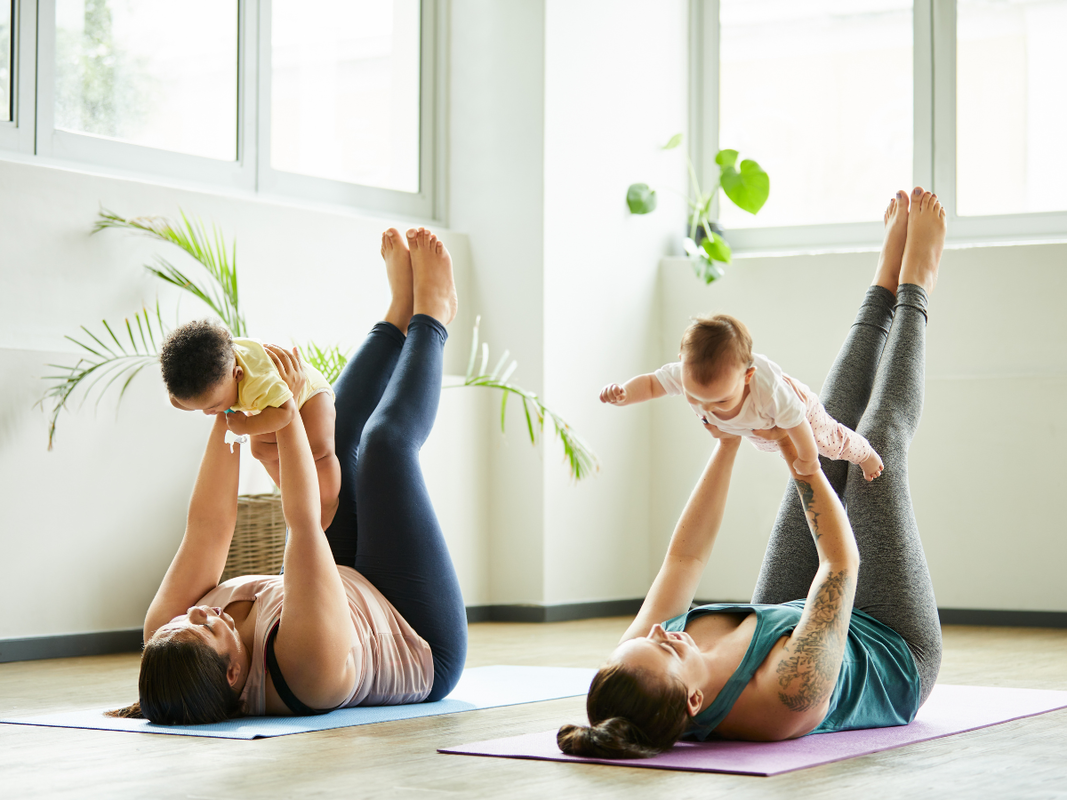
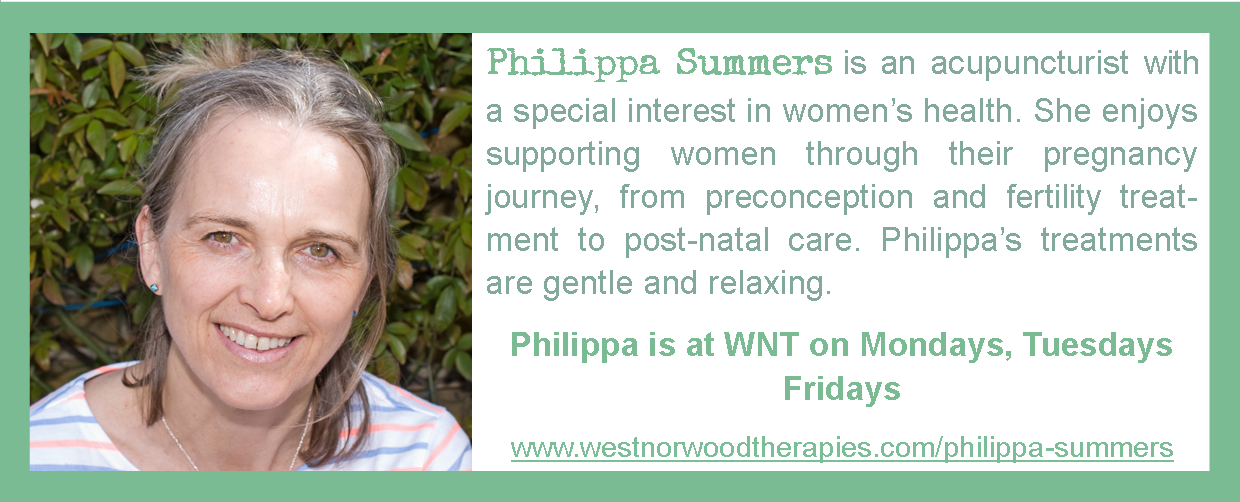
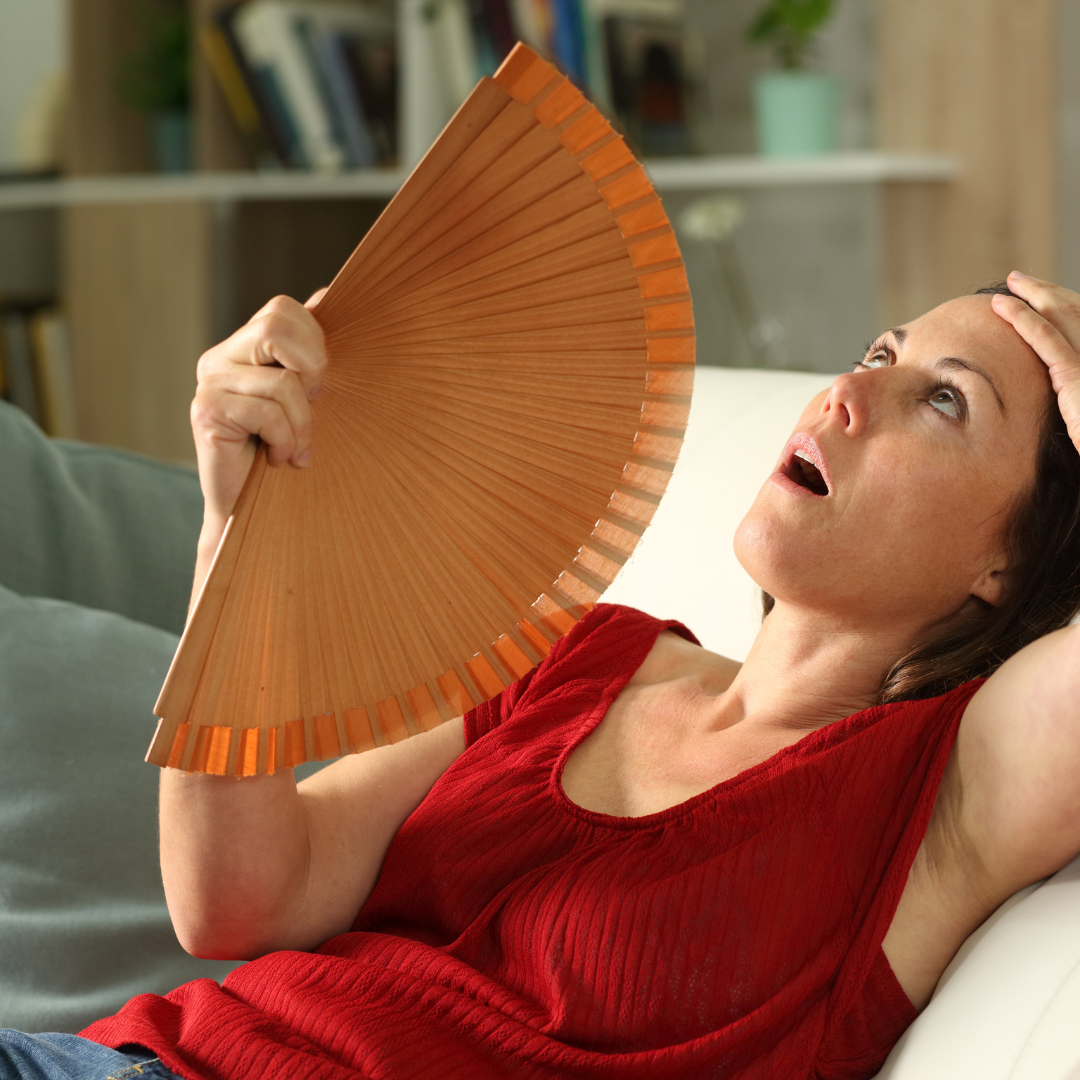

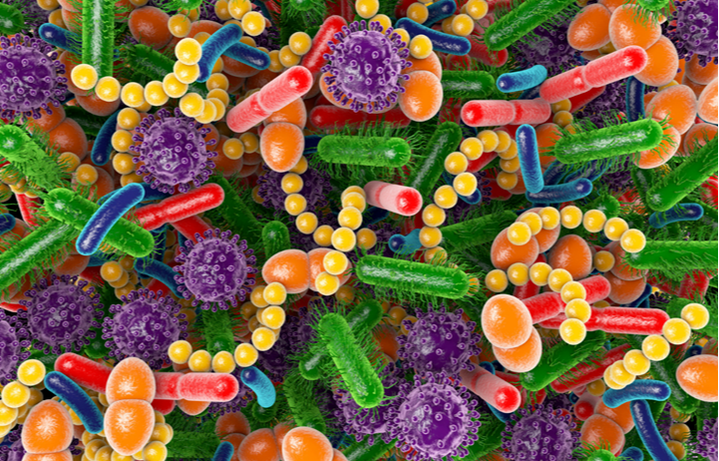
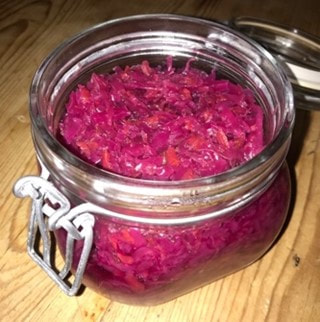

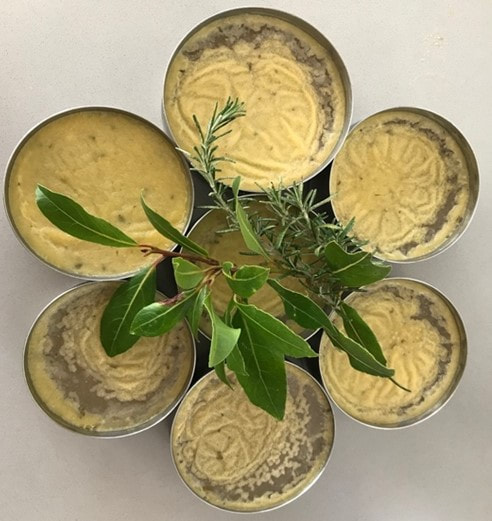
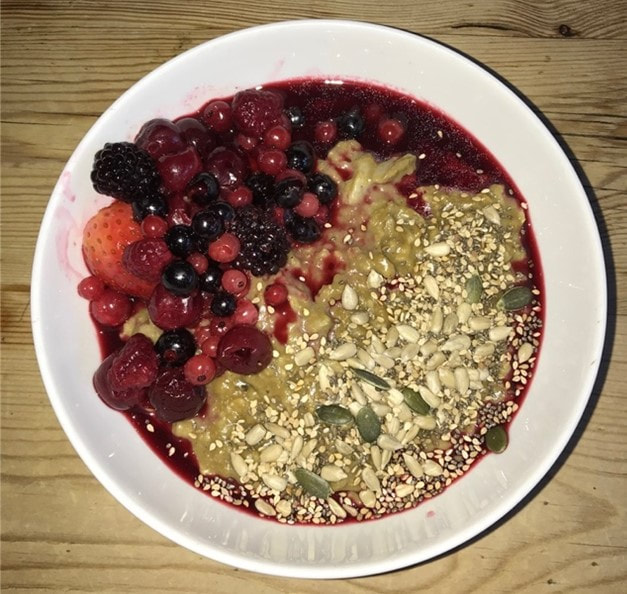

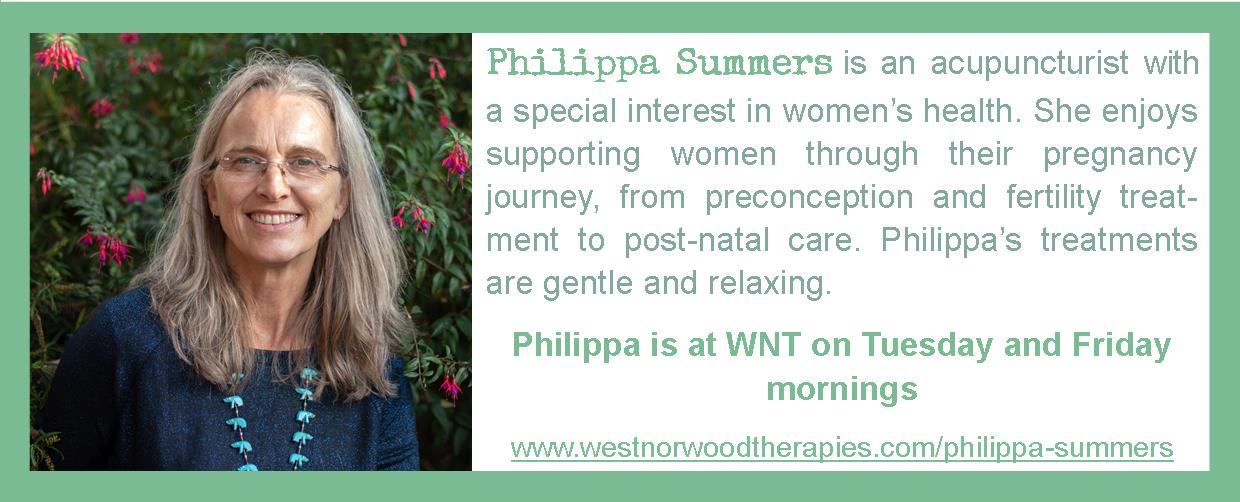

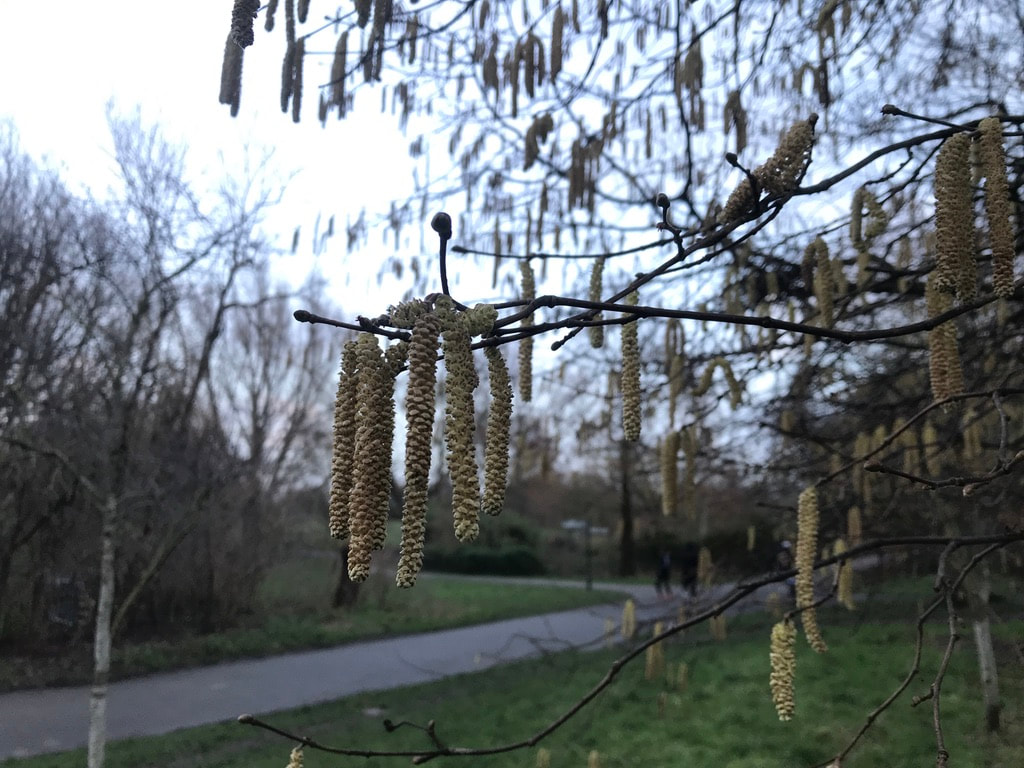
 RSS Feed
RSS Feed
